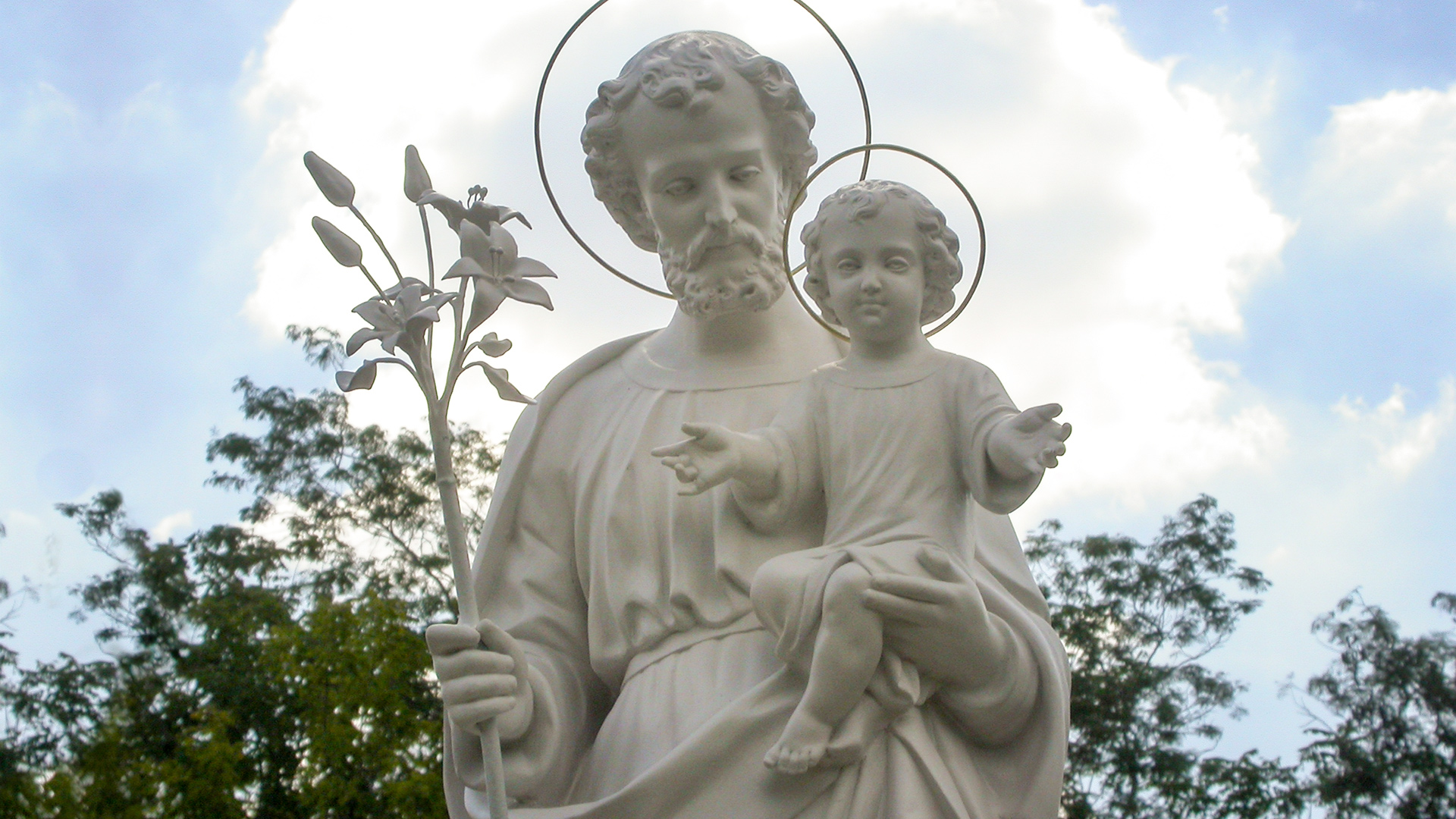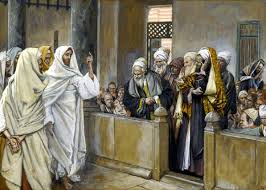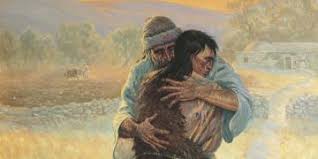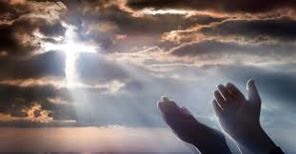Faithful to the end
LENT 2020 – Day 23
Readings: 2 Sam 7: 4-5a; Ps 89: 2-3,4-5,27,29; Mt 1: 16, 18-21, 24a
God promised Abraham that his descendants would be like the stars of the sky and “inherit the world”. Some fourteen generations later God spoke in similar fashion to David: He promised through faith that He would raise up his kingdom and build a dynasty that would last for ever. He only commanded David to build a house for Him.
What a great honour and privilege to be chosen by God Himself. Way down in David’s patrilineage was Joseph, the father of Jesus, who believed in hope and did what God told him to do. Chaste Joseph accepted the mystery of the birth of Jesus and “did as the angel of the Lord commanded him,” after God revealed His plan to him in a dream.
An honourable man at peace with himself, not only did Joseph sleep the sleep of the just, he undertook God’s plan in total obedience. This is the supreme motif of the three readings today – precisely half way through Lent – presenting us with a role model for all times.
Can we resolve to learn about Joseph and emulate him? He was man of supreme virtue, silent through the Scriptures, and the most forgotten Saint of all. He was chosen to be the foster father of Jesus. We can easily adopt him as our spiritual father, and expect paternal help and care in the ups and downs of life.
God's law not a free-for-all
LENT 2020 – Day 22
Readings: Deut 4, 1.5-9; Ps 147, 12-13, 15-16, 19-20; Mt 5, 17-19
Absolute freedom is an impossible dream, for in exercising it one is likely to trample on another’s rights. Hence the need for laws in society: they ensure that people live in harmony. Man-made laws based on natural justice guarantee a healthy balance between rights and duties.
Moses conveyed God’s laws to the people and hoped that they would go in and take possession of the land destined for them. Israel was poised to become a great nation, of wise and understanding people. They were God’s “chosen race”, privileged to have Him so close to them.
God had exhorted his people to pass on His statutes and ordinances from generation to generation. But alas, Israel departed from those righteous laws; inane additions turned them into a caricature. That’s when God intervened in human history by sending down His only Son – not to abolish the law and the prophets but to fulfil them. For instance, Jesus portrayed the Ten Commandments in a new light. Love (of God and neighbour) became the byword.
Very importantly, Jesus urged his disciples to not water down His precepts. This is an eye-opening command for us Christians, particularly for our priests, parents, teachers and leaders in general: we are called to be serious about our Christian vocation; none should take liberties with the law or even just temporise. Aren’t we extra careful to see we don’t infringe the State law? Why, then, are faith and morals a free-for-all?
Today, let’s resolve to love the law of God and soon we will taste true peace and joy!
In forgiveness mode all the time...
LENT 2020 – Day 21
Dan 3, 2, 11-20; Ps 24, 4-9; Mt 18, 21-35
Even though Azariah’s Prayer has a specific context, we know that he prayed for his country as a whole. His words of lamentation fit the current mood worldwide: we are “brought low this day in all the world because of our sins.” So, making Azariah's prayer our own, let's say: “Do not put us to shame, but deal with us in thy forbearance and in thy abundant mercy.” This sentiment is in the hearts of millions faced with the corona virus.
Quite often, deadly sins stand between relatives and friends, causing social and emotional distance. Some sins of our generation cry out to heaven! Curiously, in the Our Father we conveniently focus on the “forgive-us-our-trespasses” part of it and gloss over the words “as we forgive those who have trespassed against us.”
Jesus wants us to forgive “seventy times seven”, to ensure that we are in forgiveness mode all the time. His mercy and forgiveness is limitless; he even gave up his life to pay the price for our sins. This is a huge debt that we can’t repay; we can only participate in His suffering by relieving our neighbour of their own....
“Remember your mercy, Lord,” we pray. And He does remember His mercy at all times. What about us and our mercy vis-à-vis our neighbour?
Humility pays dividends
LENT 2020 – Day 20
Readings: Kings 5, 1-15; Ps 41, 2, 3; 42, 3, 4; Lk 4, 24-30
Naaman, that valiant army commander of Syria, suffered from leprosy. When they told him that prophet Elisha of Samaria could cure him, he rushed there, only to be upset that the prophet wasn’t very deferential. However, after he put his ego behind him and followed instructions, he was cured, and quickly proclaimed: “There is no God in all the earth but in Israel.”
Jesus is the Master Physician of the body and the soul; he cures our physical ailments and frees us from sin. But alas, we take no notice of the treasures we possess. Hence, Jesus said: “No prophet is acceptable in his own country.” We lack the humility to accept our faults when confronted with unpalatable truths. ‘Outsiders’ like Naaman strike gold, while we in our indifference or disbelief fall prey to false prophets.
Let's hasten to the altar of God like a deer to the running streams. Let's seek Him with humility and he will make us whole. Only the soul that thirsts for God stands protected.
Water of Eternal Life
Lent 2020 – Day 19
Third Sunday
Readings: Ex 17, 3-7; Ps 94, 1-2, 6-9; Rom 5, 1-2, 5-8; Jn 4, 5-42
Water is a refreshing drink, a heartening theme. Life depends on water even while its potential to destroy evokes fear.
Moses’ people thirsting for water almost stoned him to death. So as he led them to the Promised Land, the light of the faith alone was a lamp to his feet. He secured them manna yet, very despicably, they yearned for the onions they'd eaten during their slavery in Egypt.
Murmurings of discontent are not uncommon even in our day and age. We are so absorbed in our daily routine that we disregard the sweet whispers of Nature; we are so blinded by the city lights that the stars twinkling in the night sky fail to move us. Worse still, we become slaves to the world, forgetting our divine Creator and His wonders.
Jesus comes into the world to guide us back to the Father. He knows that the world can never satisfy man’s deepest longings, for man does not live by bread alone but by every word that proceeds from the mouth of God. Hence, He says, “My food is to do the will of him who sent me”; and “…whoever drinks of the water that I shall give him will never thirst.”
The water that Jesus gives becomes in us “a spring of water welling up to eternal life”. That’s a promise. Like the woman of Samaria, let’s make known the good news of this refreshing water of eternal life to everyone so that they too may glorify our Father in heaven.
Forgive, and you'll find love!
Lent 2020 – Day 16
Readings: Mic 7, 14-15, 18-20; Ps 102, 1-4, 9-12; Lk 15, 1-3, 11-32
There are those who hold the Lord in awe and others who disregard Him; there are those who loathe His name and, happily, many who love and adore Him. Negative attitudes stem from ignorance and/or malice, for the simple truth is that the Lord is at once just and merciful.
God forgives our guilt, heals our ills, and redeems our life from the grave. Mind you, these words make sense not in times of the corona virus alone; the Lord crowns us with compassion and love at all times.... We can’t thank Him enough!
Sometimes children think of parents as oppressive, but who can fail to see the reality of parental love in the parable of the Prodigal Son? Both son and father were "prodigal" – the former wasteful, the latter extravagant in love. And the father’s cry, “This your brother was dead and is alive,” only goes to show his concern for his son’s physical and spiritual health.
Let’s rid ourselves of misconceived notions, repent and forgive, and we shall find authentic love. Now is the acceptable time, now is the day of salvation (2 Cor. 6: 2).
#forgive #repent #love #coronavirus #prodigal #negativeattitudes #compassion
Steer clear of toxic emotions
Lent 2020 – Day 15
Readings: Gen 37, 3-4, 12-13a. 17b-28; Ps 104, 16-21; Mt 21, 33-43, 45-46
Bitterness, envy, jealousy, anger and hatred are toxic: even more so when they envelop the family, where only charity should reign. Alas, the betrayal of Joseph by his siblings is rampant today, for petty honours or material gains.
Joseph prefigures Jesus, who was killed by the very people who He had come to save. Many were aware of His divinity, nonetheless conspired against Him; others stood by and watched, and a few piously shed tears. In the parable of the vineyard, Our Lord hints at the fate that awaits Him.
Today, there are coteries with no qualms about denying God and currying favour with the world. They share space with cliques that cause untold suffering to whoever observes the Lord’s commandments. When they make perverse suggestions or give immoral advice to the unsuspecting they are guilty of spiritual murder. All of which amounts to stabbing the Lord a thousand times every day.
Let’s get out of such circles and decidedly be with and for the Lord our God; it’s a choice we will never regret.
Trust in the Lord with all your heart
Lent 2020 – Day 14
Readings: Jer 17, 5-10; Ps 1, 1-2, 3, 4, 6; Lk 16, 19-31
Jeremiah fearlessly denounced even kings and priests; seeing through the fallen nature of man, he declared that nothing short of a conversion could save him. “Blessed is the man who trusts in the Lord,” he said.
The Gospel draws our attention to a rich man who trusted in himself and in the good things of life; he failed to turn to the Lord with a grateful heart and to his own neighbour with concern. When he died, he was tormented in hell while the poor man was in God’s bosom.
Let’s be dutiful people, praying at all times. Let’s be kind and generous, trusting in the Lord our God: we owe Him every moment of our being. And let our conversion begin today; tomorrow may be too late.
It's not lonely at the top, we have the Lord by our side
Lent 2020 – Day 13
Readings: Jer 18, 18-20; Ps 30, 5-6, 14, 15-16; Jn 6, 63; Mt 20, 17-28
'It’s lonely at the top' is perhaps what Jeremiah felt at first when spurned by his people. Our parents and our God feel the same when we recklessly reject their plans and even rebel if things don’t turn out to our liking. Although we're free to propose, we must let God dispose: this technique is not only a stress-buster but also a herald of great blessings.
When Calvary was just round the corner, Jesus kept spoke to his disciples about wielding responsibility with care and concern for the people. “Whoever would be great among you must be your servant… even as the Son of man came not to be served but to serve,” said He.
Don’t leaders get involved in petty squabbles and at times people envy their power? Whether leaders or followers, let’s realise that all have a cross to bear; life shouldn’t be only about self but also about helping the other.
God-given tasks do entail responsibility but when we trust in the Lord, saying “Your words, Lord, are spirit and life,” we find ourselves smiling and never feel lonely at the top.
We have to serve God and neighbour
Day 12
Readings: Is 1, 10, 16-20; Ps 48, 8-9, 16-17, 21.23; Mt 23, 1-12
Isaiah recommends that we make a clean breast of our wrongdoings and pray for God’s pardon. Further on the proactive side, we need to take in the Word of God in all humility and practise even simple acts of kindness.
Jesus has a special word for leaders of all times, of the kind that don’t practise what they preach.... They are like the Pharisees and Scribes of yore, self-serving and even exploitative; in their vanity hanker after titles and draw the people to themselves rather than joyfully showing them the way to the heavenly Father.
That’s the context in which Jesus said that God alone is our Master, Teacher or Father…. Yet again, Jesus uses hyperbolic language to drive home a point: that the leaders should be service-oriented, for “whoever exalts himself will be humbled, and whoever humbles himself will be exalted.”
Jesus humbled himself taking the form of a servant and we are called to do likewise: serve God by serving our neighbour.









